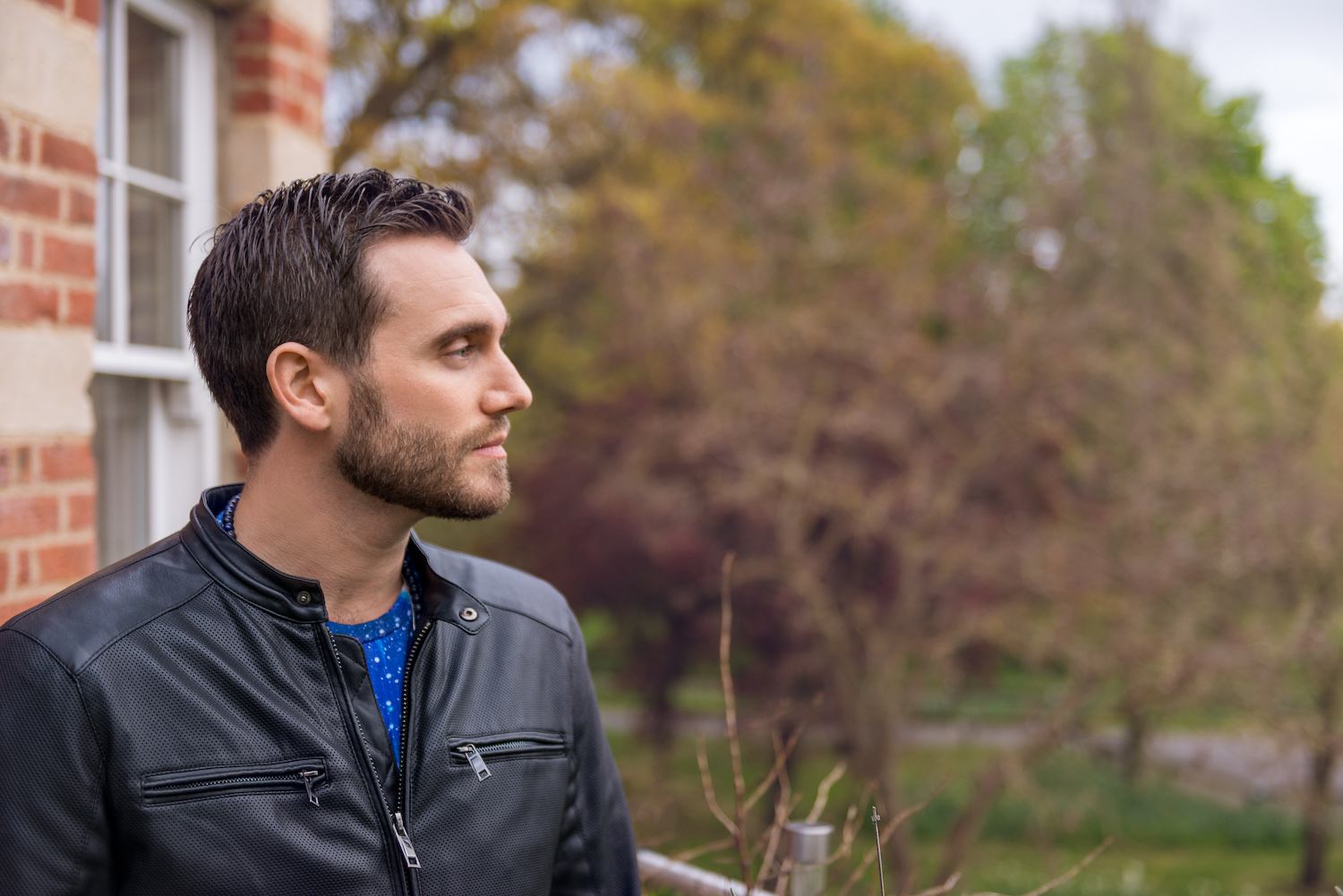Embracing the Shadow—Charlie Morley on Lucid Dreaming as Therapy
Embracing the Shadow—Charlie Morley on Lucid Dreaming as ... Mad in America



The Potential of Lucid Dreaming Therapy for Post-Traumatic Stress
On the Mad in America podcast today, we hear about the potential of lucid dreaming therapy to aid those struggling with post-traumatic stress. Our guest is Charlie Morley, a lucid dreaming teacher and bestselling author who helps people wake up in their dreams and harness the power of sleep for psychological growth.
Charlie became a Buddhist at the age of 19 and has been lucid dreaming for over 20 years. In 2018, he was awarded a Winston Churchill Fellowship to research PTSD treatment in military veterans and continues to teach workshops for people with trauma-affected sleep. These teachings form the core of his latest book Wake Up to Sleep.
The transcript below has been edited for length and clarity. Listen to the audio of the interview here.
Introduction
James Moore: Charlie, welcome. Thank you so much for joining me today for the Mad In America podcast. I’m thrilled to have you on.
Charlie Morley: Thank you. It’s a pleasure to be here.
Understanding Lucid Dreaming
Moore: We are here to talk about your work, and in particular, the use of lucid dreaming as therapy. Later, we’ll discuss some really exciting research into using lucid dreaming for posttraumatic stress. But before we get there, I’m sure that some listening will know what lucid dreaming is, but many won’t. You are a lucid dreaming teacher, so could you tell us what lucid dreaming is, and perhaps describe the experience a little for those who might not have experienced it for themselves?
Morley: My job is to teach people how to have lucid dreams. So, the first thing is what is a lucid dream? A lucid dream is any dream where you’re actively aware of the fact that you’re dreaming as the dream is happening. So you are still sound asleep, but in the dream, you realize, aha, this is all a dream.
So anyone who is listening and thinks, I’ve had one of those where I was in the dream and then they suddenly realize, Wow, I’m dreaming now. My body is asleep in bed, I’m inside my mind and I’m exploring this three-dimensional hallucination of my psychology. That is a lucid dream. For those who haven’t had that experience, I’d ask them to perhaps think of a nightmare, where in the nightmare, they’ve thought, I’ve got to wake up, I’ve got to wake up. If you’ve ever had that experience, that was actually a lucid dream, too, because the moment you acknowledge the need to wake up, you had indirectly acknowledged you were dreaming. Of course, if anyone ever has had that experience or has that in the future, the first takeaway I’d like to offer is, if you can, don’t wake up.
If you’re in a nightmare, you realize it’s a nightmare and you have that feeling of having to wake up, then don’t wake up. Every time you wake from a nightmare, necessarily, the nightmare has to recur because it’s like a therapy session cut short. In almost all cases, nightmares play a healing role, and every time we wake ourselves from a nightmare, either intentionally or just because the nightmare is so scary, the nightmare recurs. This is why when people say that they don’t have happy dreams that recur, that dream where I had a dinner date with my favorite celebrity for example. Because that was integrated in the moment and it was a wonderful therapy session. But the one where you replayed that trauma or the one where you had a future projection of some threat that may befall you, every time we wake ourselves from one of those, they have to recur, not because the brain hates us, but because it loves us.
It makes me think of when I went to Zoom therapy during lockdown and there were a couple of times when my internet went down in the middle of a session. As soon as the internet went down my therapist, because he loves me, started texting me and emailing me. Not because he is trying to have a go at me but because he wants to get back online so we can finish this wonderful healing discussion we were having. That’s how the nightmares are working.
Anyway, I digress a little bit there but essentially a lucid dream is any dream you’ve had where you know that you’re dreaming as the dream is happening, but you are sound asleep. Then, once you know it’s a dream, you can choose what happens and you realize that if I’m conscious in my unconscious mind, then this is a similar state to hypnosis. It’s like a very, very deep state of hypnosis. You’re right at the bottom of the iceberg in a lucid dream because you can’t get more unconscious than asleep.
So the elevator pitch is that anything you can treat through hypnotherapy, you can also treat through lucid dreaming whether it’s working with confidence, working with PTSD or childhood trauma. Training athletes to be better in their discipline, there is a lot of research on that or whether it’s for spiritual practice. It has a long history in Buddhism, Toltec Shamanism and Sufism. So lucid dreaming is not a new thing at all and it’s got good providence.
The Healing Potential of Lucid Dreaming
Moore: There’s a brilliant TED Talk that you did a little while ago that talks about embracing the shadow and you talk there of the innate healing potential that we all have but can’t necessarily connect to. So is lucid dreaming a possible route to that healing potential?
Morley: Yes, exactly that. It’s like that old iceberg theory of consciousness. It is very outdated and simplistic, but quite a good image to use here. If we think about things like hypnotherapy, maybe some forms of psychedelics, mindfulness practices, shamanic journey and yoga nidra, all of those take a strand of the conscious mind and just dip it down beneath the surface of the water into those upper echelons of the iceberg.
However, in a lucid dream, you are taking that strand from the top of the iceberg and dropping it right down to the bottom, right below the surface because you can’t get more unconscious than asleep. It might take days, weeks, or even
SDGs, Targets, and Indicators
SDG 3: Good Health and Well-being
- Target 3.4: By 2030, reduce by one-third premature mortality from non-communicable diseases through prevention and treatment and promote mental health and well-being.
- Indicator 3.4.1: Mortality rate attributed to cardiovascular disease, cancer, diabetes, or chronic respiratory disease.
- Indicator 3.4.2: Suicide mortality rate.
- Indicator 3.4.3: Proportion of the population with access to affordable medicines and vaccines on a sustainable basis.
- Indicator 3.4.4: Mortality rate attributed to hazardous chemicals, air, water, and soil pollution and contamination.
- Indicator 3.4.5: Number of people requiring interventions against neglected tropical diseases.
- Indicator 3.4.6: Number of deaths and missing persons attributed to disasters per 100,000 population.
SDG 4: Quality Education
- Target 4.7: By 2030, ensure that all learners acquire the knowledge and skills needed to promote sustainable development, including, among others, through education for sustainable development and sustainable lifestyles, human rights, gender equality, promotion of a culture of peace and non-violence, global citizenship, and appreciation of cultural diversity and of culture’s contribution to sustainable development.
- Indicator 4.7.1: Extent to which (i) global citizenship education and (ii) education for sustainable development are mainstreamed in (a) national education policies; (b) curricula; (c) teacher education; and (d) student assessment.
- Indicator 4.7.2: Proportion of schools with access to (a) electricity; (b) the Internet for pedagogical purposes; (c) computers for pedagogical purposes; (d) adapted infrastructure and materials for students with disabilities; (e) basic drinking water; (f) single-sex basic sanitation facilities; and (g) basic handwashing facilities (as per the WASH indicator definitions).
SDG 5: Gender Equality
- Target 5.5: Ensure women’s full and effective participation and equal opportunities for leadership at all levels of decision-making in political, economic, and public life.
- Indicator 5.5.1: Proportion of seats held by women in (a) national parliaments and (b) local governments.
- Indicator 5.5.2: Proportion of women in managerial positions.
SDG 10: Reduced Inequalities
- Target 10.2: By 2030, empower and promote the social, economic, and political inclusion of all, irrespective of age, sex, disability, race, ethnicity, origin, religion, or economic or other status.
- Indicator 10.2.1: Proportion of people living below 50 percent of median income, by age, sex, and persons with disabilities.
- Indicator 10.2.2: Proportion of men, women, and children of all ages living in poverty in all its dimensions according to national definitions.
- Indicator 10.2.3: Proportion of population reporting having personally felt discriminated against or harassed in the previous 12 months on the basis of a ground of discrimination prohibited under international human rights law.
SDG 16: Peace, Justice, and Strong Institutions
- Target 16.3: Promote the rule of law at the national and international levels and ensure equal access to justice for all.
- Indicator 16.3.1: Proportion of victims of violence in the previous 12 months who reported their victimization to competent authorities or other officially recognized mechanisms.
- Indicator 16.3.2: Unsentenced detainees as a proportion of overall prison population.
- Indicator 16.3.3: Proportion of the population who have experienced a dispute in the previous two years and who accessed a formal or informal dispute resolution mechanism, by type of mechanism.
- Indicator 16.3.4: Total value of inward and outward illicit financial flows (in current United States dollars).
Table: SDGs, Targets, and Indicators
| SDGs | Targets | Indicators |
|---|---|---|
| SDG 3: Good Health and Well-being | Target 3.4: By 2030, reduce by one-third premature mortality from non-communicable diseases through prevention and treatment and promote mental health and well-being. |
|
| SDG 4: Quality Education | Target 4.7: By 2030, ensure that all learners acquire the knowledge and skills needed to promote sustainable development, including, among others, through education for sustainable development and sustainable lifestyles, human rights, gender equality, promotion of a culture of peace and non-violence, global citizenship, and appreciation of cultural diversity and of culture’s contribution to sustainable development. |
|








